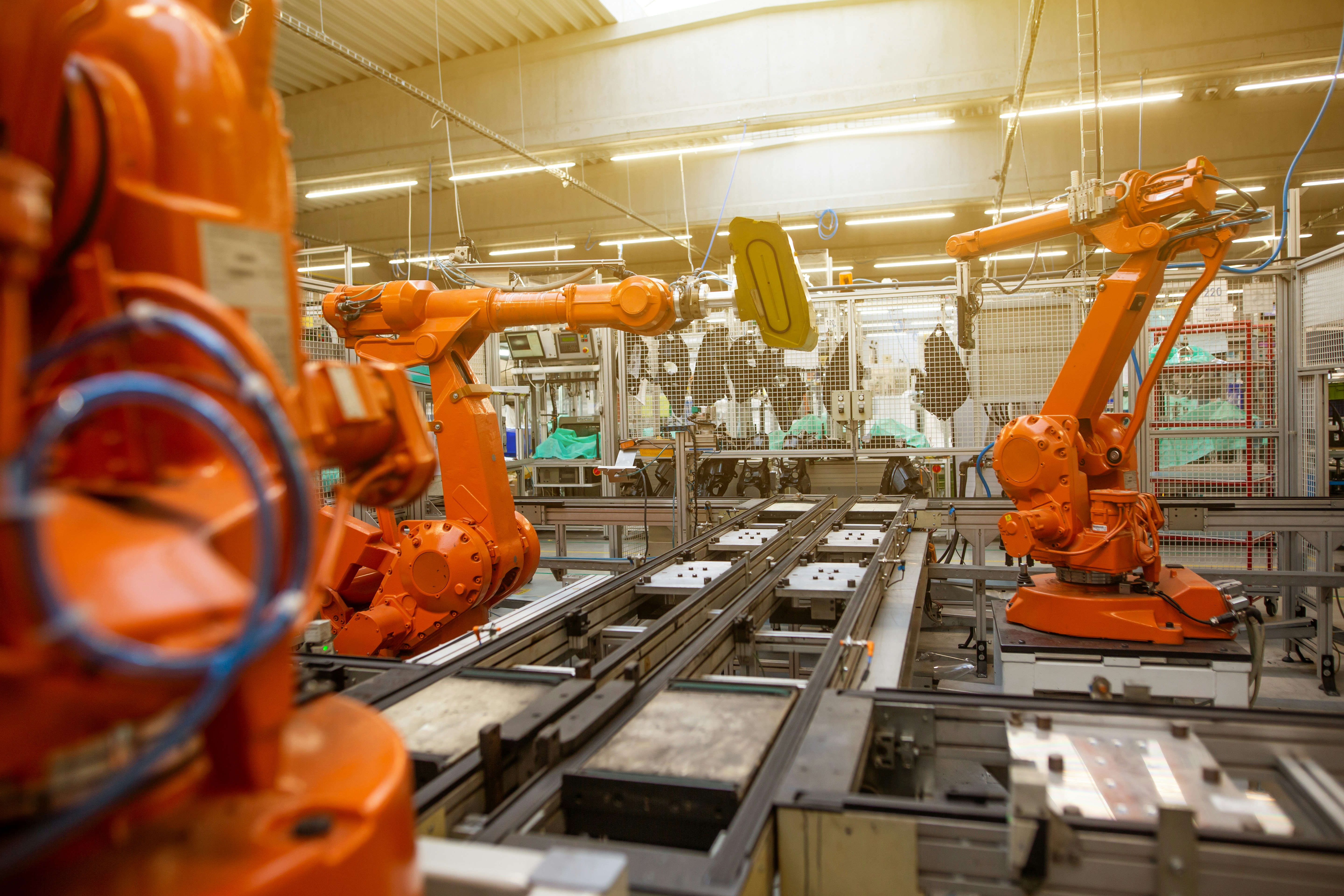
Common Pitfalls Robotics Job Seekers Face and How to Avoid Them
The robotics industry spans an array of applications, from manufacturing and warehousing automation to surgical robots, drones, and consumer products like home-assistance robots. In the UK alone, robotics has grown into a key technology sector, attracting investment, driving innovation, and creating opportunities for engineers, software developers, data scientists, and more. Yet, as exciting as this field is, breaking into robotics—or advancing to the next level—can be challenging. Employers often look for broad technical skills as well as niche expertise, plus an ability to handle real-world constraints like safety standards and project scalability.
If you’re aiming to carve out a career in robotics, it’s vital to understand the common missteps that can hinder your progress. This article covers the frequent pitfalls that robotics job seekers encounter—and offers practical guidance on how to avoid them. Whether you’re focusing on control systems, AI integration, mechanical design, or field deployment, these insights will help you stand out in a competitive hiring landscape.
When you’re ready to search for your next role in robotics—be it research, product engineering, systems integration, or operations—check out Robotics Jobs for listings that match your ambitions. By steering clear of these pitfalls, you’ll put yourself in prime position to succeed in one of the most dynamic and transformative fields of modern technology.
1. Overlooking the Interdisciplinary Nature of Robotics
The Problem
Robotics isn’t just about coding or mechanical design. It brings together electronics, software, control systems, sensors, AI, and sometimes areas like materials science and human-computer interaction. Some candidates focus on just one element—say, embedded firmware or mechanical CAD—without acknowledging how these components merge to create a functional robot.
How to Avoid It
Show cross-functional awareness: Even if you’re a firmware developer, acknowledge how your code interacts with mechanical constraints, sensor inputs, or real-time operating systems.
Highlight collaborative projects: Employers love candidates who’ve worked with cross-disciplinary teams. Emphasise experiences where you coordinated with mechanical, electrical, and software teams to solve a problem.
Learn enough outside your niche: For instance, if you’re a controls engineer, know the basics of hardware prototyping, or if you’re an AI specialist, understand sensor data processing pipelines.
Demonstrate system-level thinking: Show that you can see how small design choices (like sensor placement or code structure) affect performance, reliability, and cost across the entire system.
2. Neglecting Hands-On Prototyping and Practical Skills
The Problem
Robotics involves physical machines moving in real-world environments—unlike pure software roles, where everything can be done virtually. Some job seekers assume strong theoretical knowledge is enough, but many employers place high value on practical experience: building test rigs, soldering connections, calibrating sensors, or adjusting mechanical assemblies.
How to Avoid It
Build a portfolio of tangible projects: Whether it’s a uni project, a hobby robot, or an open-source collaboration, emphasise you’ve actually assembled or coded something that moved or sensed its environment.
Mention lab or workshop skills: If you’re confident with tools like 3D printers, CNC machines, or even basic electronics prototyping, detail that on your CV.
Talk about debugging experience: Real-world robotics often means diagnosing issues—like motor stalling or unexpected sensor noise. Employers appreciate candidates who’ve tackled these hands-on challenges.
Show an iterative approach: Outline how you improved prototypes based on test data or user feedback. Iteration is central to successful robotics development.
3. Forgetting Compliance, Safety, and Regulatory Knowledge
The Problem
Robotics systems can operate in close proximity to humans or critical infrastructure, so safety is paramount. Many job seekers emphasise advanced control algorithms but overlook the necessary certifications, risk assessments, or compliance protocols (such as CE marking in Europe, or ISO standards). This can make you seem unprepared for real-world deployment.
How to Avoid It
Research relevant standards: Identify whether ISO 10218 for industrial robots, IEC 61508 for functional safety, or other regulations apply to your area. Show you know the basics.
Highlight safe design features: If you integrated emergency stops, used redundant sensors, or designed software failsafes, mention these experiences.
Conduct risk assessments: If you’ve done hazard analyses or engaged with safety engineers, emphasise that exposure.
Stay updated on collaborative robots (cobots): If relevant, demonstrate you understand how safety measures differ when robots work directly alongside humans.
4. Overfocusing on Academic Credentials Without Application
The Problem
Robotics is a field steeped in R&D, but purely academic achievements—like papers or theoretical derivations—might not impress employers seeking practical problem-solvers. If you rely solely on academic prestige without showing how your insights translate to functioning robots, you risk appearing out of touch with industry demands.
How to Avoid It
Translate research into outcomes: If your PhD was on path planning, explain how it could shorten route times in an autonomous vehicle or forklift in a warehouse.
Balance theory and practice: Talk about how you validated your simulations in a real prototype, or how your novel algorithm reduced CPU usage or improved reliability.
Learn from industry case studies: Familiarise yourself with how leading companies turned research breakthroughs into commercial products. Reflect that knowledge in interviews.
Adapt your language: Minimise heavy jargon in CVs or cover letters. Focus on the tangible benefits or performance improvements you achieved.
5. Not Showcasing Programming and AI Skills
The Problem
Modern robotics typically involves advanced software—from embedded systems and real-time OS usage to AI-based perception and decision-making. Some mechanical or electrical engineers overlook the importance of coding and machine learning, while pure software developers might underestimate real-time constraints or hardware integration.
How to Avoid It
Learn essential robotics languages and frameworks: ROS (Robot Operating System), C++, Python, or MATLAB are often must-haves. Show direct experience with them.
Explore AI in robotics: If you’re an AI or data science candidate, emphasise experience with computer vision, sensor fusion, or reinforcement learning for control.
Point out real-time or embedded constraints: If you understand deadlines and scheduling in a real-time OS, highlight that.
Demonstrate debugging and optimisation: Mention any efforts to reduce latency, memory footprint, or improve algorithmic efficiency on resource-limited hardware.
6. Ignoring Communication and Teamwork
The Problem
Robotics development rarely happens in isolation. Engineers, designers, technicians, and product managers must collaborate intensely. A technically brilliant applicant who struggles with teamwork or clear communication may not thrive in a dynamic robotics environment.
How to Avoid It
Provide examples of teamwork: Did you lead a robotics club, coordinate a design sprint, or manage interdependencies between electronics and software teams? Illustrate those experiences.
Highlight user-focused design: If you built an interface for field technicians or explained system behaviour to non-technical stakeholders, mention it.
Show problem-solving under constraints: Robotics projects often face urgent deadlines or unexpected mechanical issues. Talk about how you managed these collectively and kept the team aligned.
Emphasise soft skills in interviews: Be engaging, clarify your explanations, and ask thoughtful questions about the role, the team dynamic, and the company’s processes.
7. Overlooking Domain Specialisation
The Problem
Some robotics niches—like surgical robotics, agricultural drones, or warehouse automation—have unique challenges. Generic CV statements about “robot design” might not impress employers seeking domain-specific insights (sterilisation requirements in medical labs, robust GPS-lacking navigation in agriculture, etc.).
How to Avoid It
Tailor your application: Research each employer’s sector. If it’s healthcare, emphasise your familiarity with FDA or MDR guidelines. If it’s drones, highlight your experience with flight controllers and GPS-denied navigation.
Mention relevant project examples: Even if they’re student or personal projects, choose ones closest to the company’s domain to show your aptitude.
Use industry-specific terminology: For example, talk about “pick-and-place cycles” in factory automation or “telemetry systems” for UAVs.
Show willingness to learn domain nuances: If you haven’t worked in that exact field, express enthusiasm for picking up domain knowledge quickly, referencing any analogous experiences.
8. Underestimating the Importance of Testing and Validation
The Problem
Robotics prototypes often fail in unexpected ways, from sensor drift to mechanical wear. Some candidates emphasise product design but ignore how to systematically test and iterate. Employers value those who plan for thorough field trials, logging, and analytics—even for early prototypes.
How to Avoid It
Discuss structured testing strategies: Unit tests in software, hardware-in-the-loop (HIL) simulation, or continuous integration (CI) for embedded code.
Highlight data collection and analysis: If you used logs or telemetry to identify performance bottlenecks or early failures, detail those methods.
Show real-world validation: Mention if you tested robots in varied environments (outdoors, high humidity, low light) or under stress conditions (heavy loads, 24/7 operation).
Mention iterative improvements: Outline how you used test data to refine your designs, reduce errors, or increase reliability across repeated cycles.
9. Presenting a Generic Tech CV Without Robotics Emphasis
The Problem
Robotics companies often sift through a glut of generic engineer or software developer CVs. If your CV doesn’t highlight robotics-related skills—like kinematics, sensor fusion, or robotic software frameworks—it might be overlooked, even if you possess the relevant expertise.
How to Avoid It
Dedicate a robotics section: Summarise your robotics-related coursework, projects, or professional roles under a clear heading (e.g., “Robotics Experience”).
Use keywords carefully: Terms like “ROS,” “SLAM,” “PID control,” “Inverse Kinematics,” or “motion planning” can catch the attention of automated screening or busy recruiters.
Include visuals or links: Where possible, link to a GitHub repository or a short online demo video. This is especially impactful for physical systems.
Highlight relevant achievements: E.g., “Implemented a SLAM algorithm that reduced localisation error by 30%,” or “Developed a manipulator control loop that cut cycle time by 20%.”
10. Downplaying Continuous Learning and Open-Source Involvement
The Problem
Robotics evolves rapidly, blending breakthroughs in AI, sensors, materials, and computing power. Employers prize candidates who keep learning, attend industry events, or contribute to open-source robotics libraries—signalling both engagement and adaptability. If you appear stagnant or uninterested in emerging trends, you may be passed over.
How to Avoid It
Engage with open-source projects: Even minor contributions to frameworks like ROS or MoveIt! demonstrate genuine interest.
Mention courses or certifications: If you’ve taken online modules in machine learning, embedded systems, or mechanical design, emphasise these extra efforts.
Attend conferences and workshops: If you’ve participated in events like ROSCon, ICRA (International Conference on Robotics and Automation), or local robotics meetups, include them.
Stay updated on robotics news: Display awareness of cutting-edge topics—humanoid robot advancements, swarm robotics, soft robotics, or next-gen sensor tech—when talking with interviewers.
11. Missing Commercial or Business Acumen
The Problem
Robotics solutions often need to justify ROI or meet market demand, especially in start-ups or product-driven companies. A purely technical approach—without considering cost, supply chain feasibility, or user adoption—might signal you’re unready for the commercial side of robotics.
How to Avoid It
Show cost-awareness: If you devised a cheaper sensor setup or streamlined manufacturing steps, mention how that boosted margins or reduced time-to-market.
Discuss scalability: Mention how your design can handle higher production volumes, or how you integrated standard off-the-shelf components for easier servicing.
Highlight user adoption concerns: If you delivered prototypes to real customers or pilot sites, mention how you gathered feedback and refined the product.
Demonstrate entrepreneurial spirit: In a start-up, you may need to pitch ideas or secure buy-in from non-technical stakeholders. Mention any relevant presentation or budgeting experience.
12. Failing to Follow Up or Maintain Professional Connections
The Problem
Networking is crucial in a niche field like robotics. Some candidates ace interviews or make great contacts at conferences but never follow up, leading potential employers to assume disinterest. Others fail to ask for feedback when rejected, missing a chance to grow or leave a positive impression.
How to Avoid It
Send a thank-you email: After interviews or meaningful conversations, thank people for their time and reiterate your enthusiasm. It can tip the scales in your favour.
Politely request feedback: If you don’t get the role, ask where you could improve. Employers appreciate the courtesy and might keep you in mind for future openings.
Keep networking warm: Connect on LinkedIn with interviewers or industry peers. Occasionally share your robotics accomplishments or comment on relevant news to stay visible.
Be respectful of boundaries: Don’t pester with daily follow-ups. A balanced, professional approach is best.
Conclusion
The robotics sector in the UK continues to gather momentum, powered by innovations in AI, sensor technology, agile manufacturing methods, and collaborative robot designs. For job seekers, robotics offers a chance to make a tangible impact on how people live and work—whether through safer workplaces, more efficient supply chains, advanced healthcare solutions, or entirely new consumer products. Yet, seizing these opportunities demands more than just enthusiasm for machines that move.
Key Takeaways
Balance Depth and BreadthEmployers seek individuals who excel in their niche (be it mechanical design, embedded programming, or AI-based controls) but can also collaborate with other disciplines.
Demonstrate Practical Know-HowRobotics is inherently physical. Show you can prototype, test, and iterate in real environments, not just in simulations or theory.
Understand Safety, Compliance, and Real-World ConstraintsYour prototypes might need to be manufactured at scale, comply with safety regs, and operate reliably. Don’t neglect these factors.
Stay Open to Continuous LearningRobotics evolves quickly; staying abreast of new sensors, software frameworks, or application areas will make you more adaptable and valuable.
When you’re ready to explore roles that fit your skill set—whether you’re a control systems engineer, software developer, or mechanical designer—browse Robotics Jobs for open positions across the UK. By avoiding the pitfalls listed here and proactively highlighting your unique strengths, you’ll significantly enhance your odds of landing a role in this rapidly developing field. Good luck, and may your next robotic innovation push the boundaries of what’s possible!


